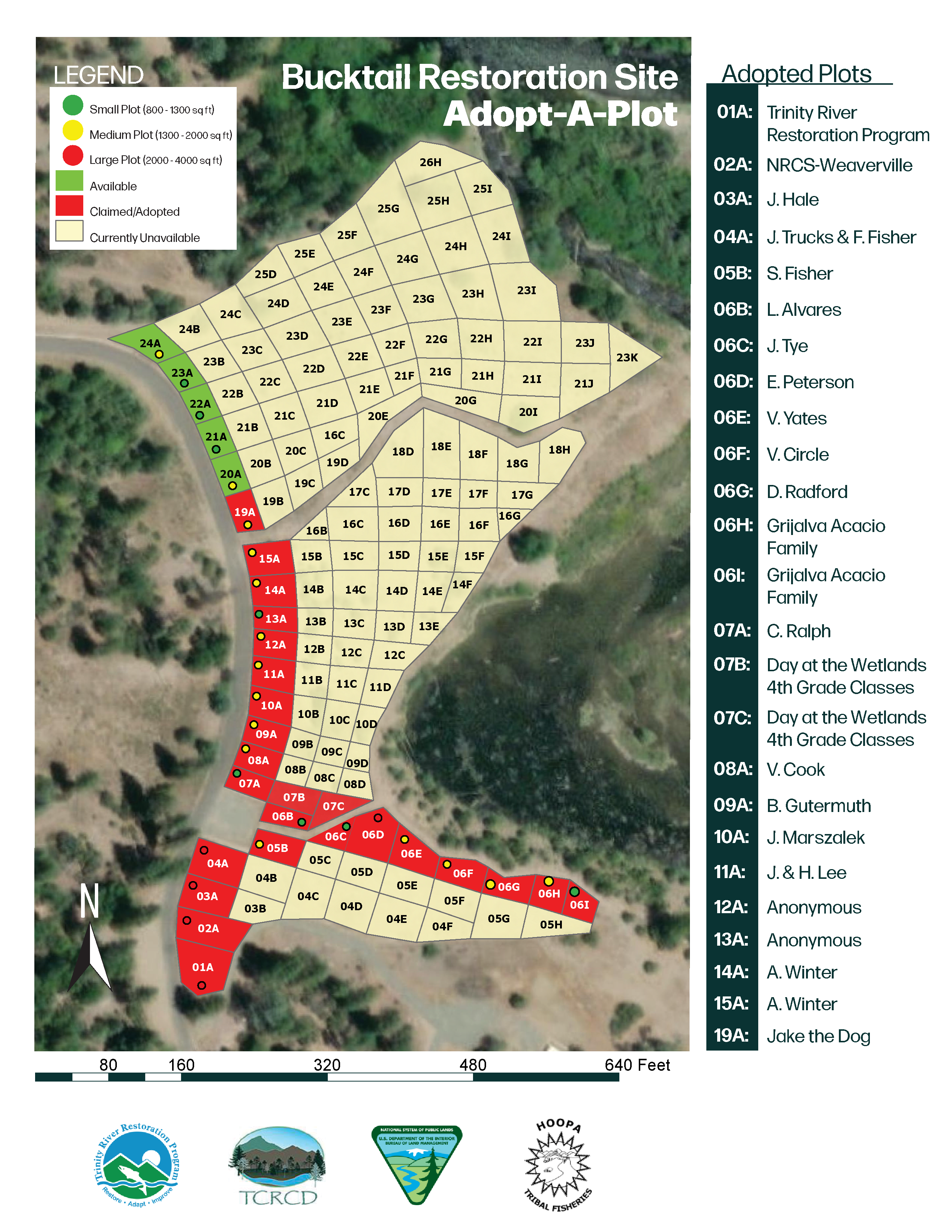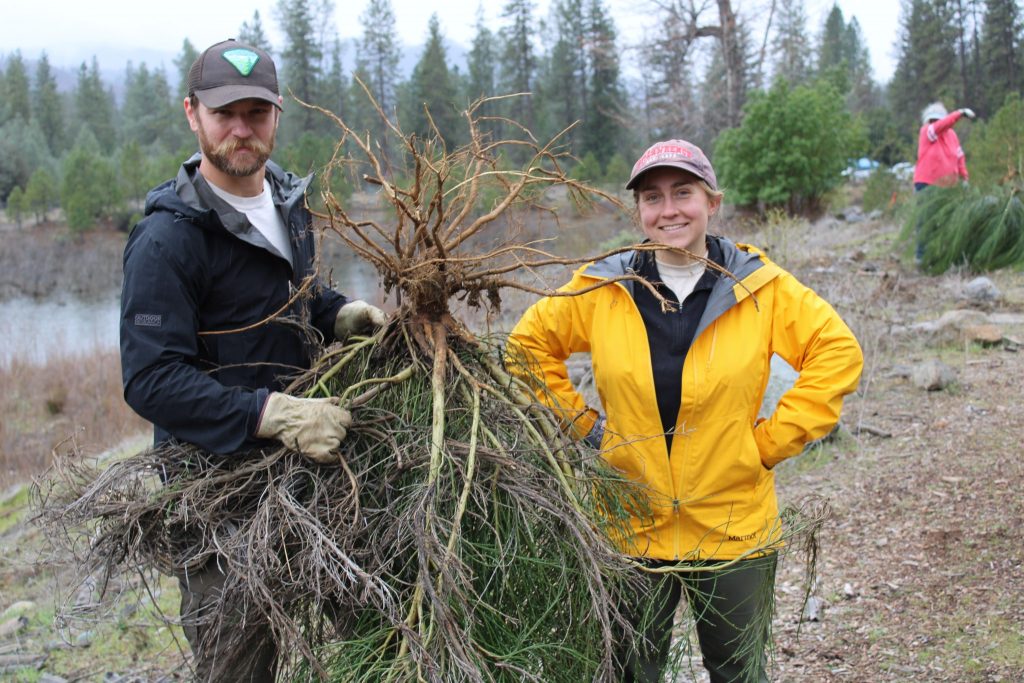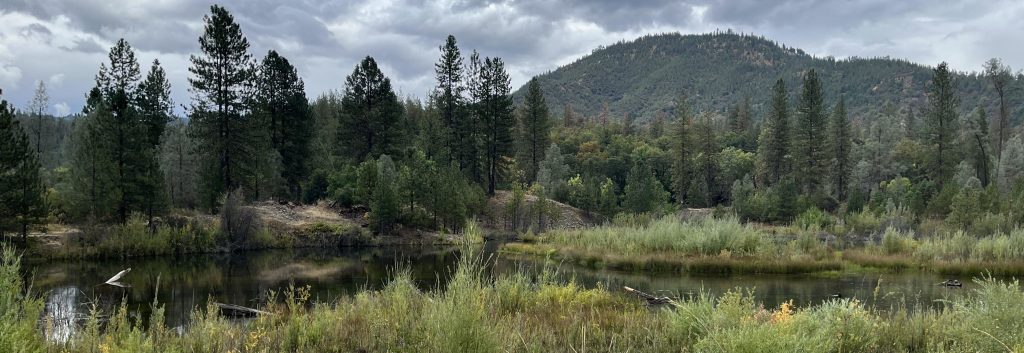
What is Adopt a Plot? Adopt a Plot is a program facilitated by the TRRP, TCRCD, and BLM at the Bucktail Recreational Area. Participants are encouraged to volunteer to “adopt a plot” and keep the plot rid of invasive plants, including star thistle, Himalayan blackberry, and Dalmatian toadflax at their own leisure. The plots are designed in various sizes, ranging from 700 ft2 to 3000 ft2.
Bucktail site history… Portions of this area were first restored by TRRP and partners in 2008 as the Dark Gulch Rehabilitation Project. The site was revisited in 2016, with the goals to increase aquatic habitat for salmonids over a range of flow conditions by creating hydraulic and ecological complexity in the form of in-channel and riverine elements. The design elements for the Bucktail channel rehabilitation included mid-channel islands, split flows, side channels, wetlands, alcoves, lowered floodplains, large wood/boulder habitat structures, and riparian revegetation. Site-specific design features are intended to evolve over time under the congressionally mandated flow releases described in the ROD.
Why is it important to remove invasive species? Invasive species are non-native or introduced species that have the ability to be destructive (economically or ecologically) to the surrounding environment. Left unmanaged, these noxious weeds can devastate native habitats by reducing essential biodiversity. Without the natural predators that keep invasive plants in check in their native environments, their expansion is typically unhindered, giving them a major competitive advantage. Removing invasive species allows native species (including plants, pollinators, mammals, birds, fish, and the rest of the ecosystem) the space and resources to better thrive in their native environments, thus promoting a healthier ecosystem.
TRRP and partners regularly engage in manual invasive species removal throughout Trinity County. Restoration projects are meticulously managed to avoid spreading invasive species during construction. However, until every single weed is removed from the regional area, the seed source will continue to exist, so the job of removing invasive species is far from complete.
The purpose of Adopt a Plot is to encourage stewardship of public lands and promote invasive species removal education, as well as to work towards a weed-free Trinity River Watershed productively and collaboratively. Staff from our partnering agencies will be available to provide support, identification tips, tools, and awareness. Additionally, many of us have volunteered to adopt our own plots and look forward to connecting with the community.
When? We politely request that participants visit their plots a minimum of 1x per year, but the rest is purely up to you! Partnering agencies will be offering events in 2024 but attendance is not required to adopt a plot.
We have two weed pulling events in 2024, Saturday April 13 & Saturday May 11. Please contact Kiana Abel for more details at 530-623-1800
Contact
Trinity River Restoration Program, Kiana Abel
info@trrp.net / 530-623-1800
1313 S. Main Street – Weaverville – open daily 8:00am – 4:30pm
The Targets…
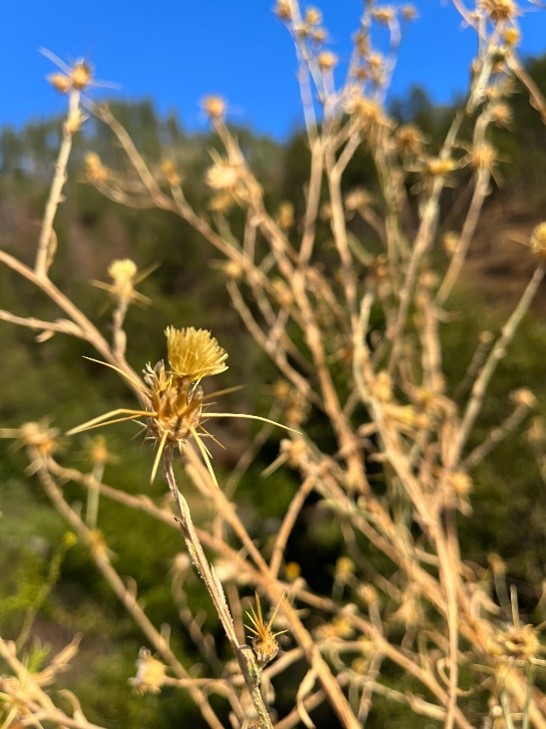
| Star thistle (Centaurea solstitialis) * Annual species. * Propagates rapidly by seed. To remove: pull the entire plant up by the roots by hand. Discard entire plant in a well-sealed plastic bag into the landfill; flowers can develop into seeds after being removed. |
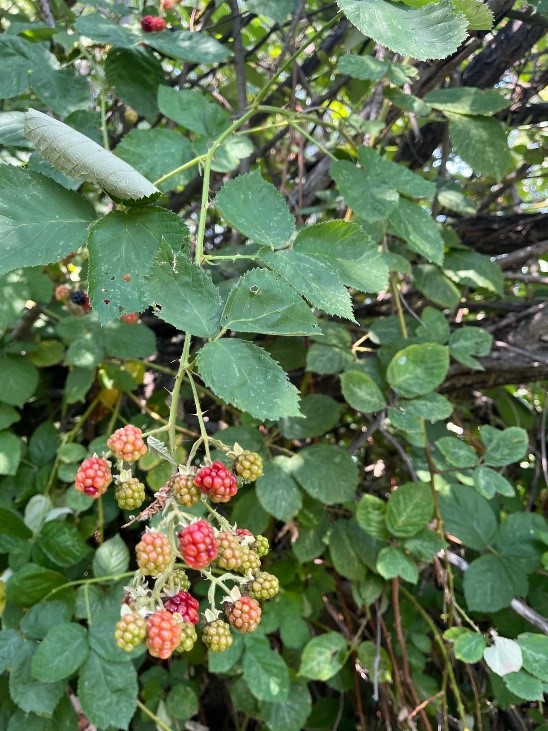
| Himalayan blackberry (Rubus armeniacus) * Perennial species. Do not confuse with native blackberry. * Propagates by root divisions and seed. To remove: remove the entire plant by the roots using a shovel. Can produce roots anywhere along the stem. Pile for burning or composting; make sure plants are fully dead before putting in contact with soil. |
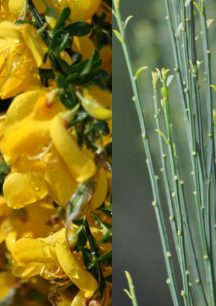
| Scotch broom (Cytisus scoparius) * Perennial woody species. * Propagates by seed. To remove: if large: use a high leverage weed wrench (or a come along) to pull the extensive tap root. If small: pull by hand slowly to extract tap root. Plants can be piled and burned, but any seeds present should be removed and discarded in the landfill during removal. |
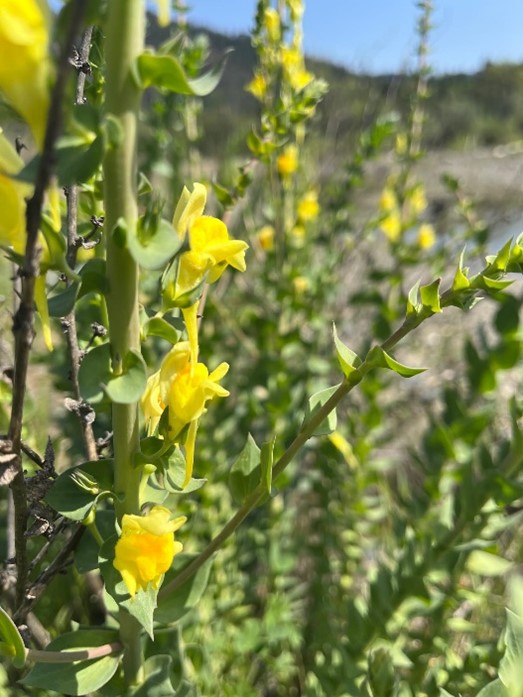
| Dalmatian toadflax (Linaria dalmatica subsp dalmatica) * Perennial species that resembles snapdragons. * Propagates by seed and root division. To remove: remove the entire plant by the roots using a shovel. Will vigorously resprout if the root is not entirely removed, so take extreme care to fully extract. |

